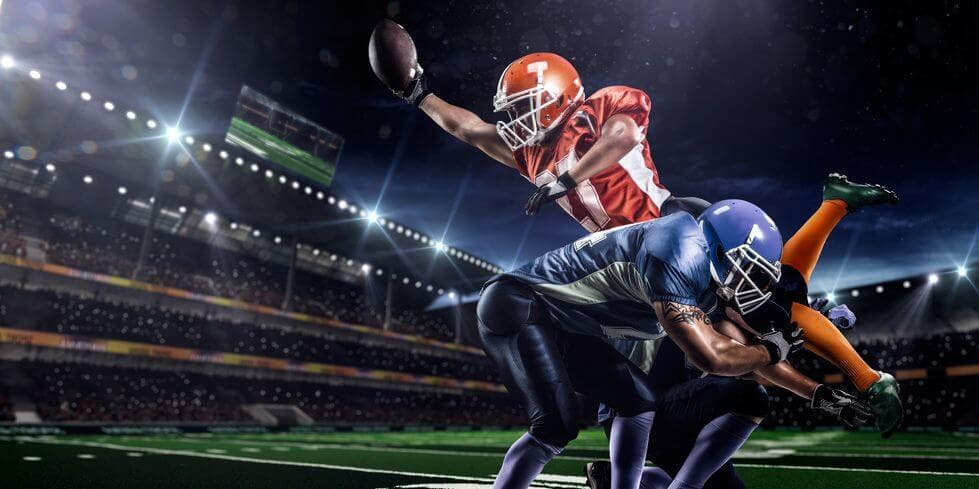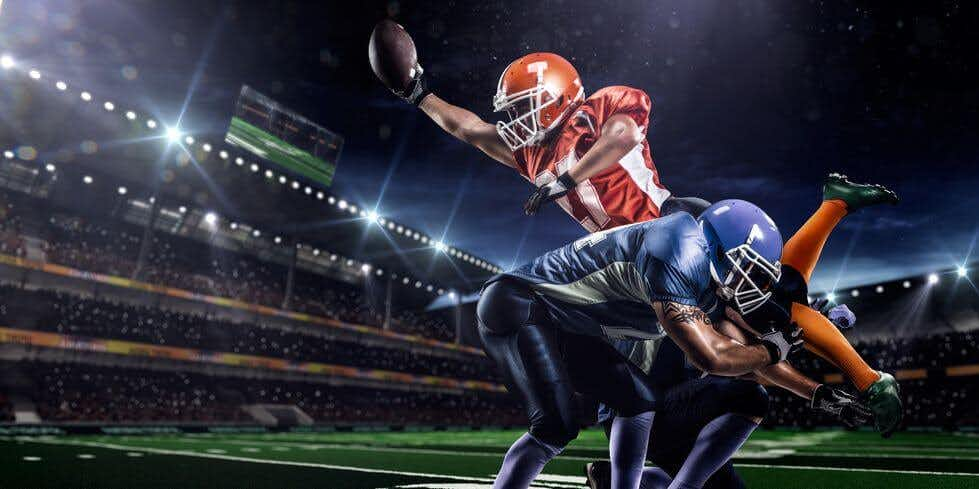An alarming number of former NFL players are being diagnosed with CTE (chronic traumatic encephalopathy) a progressive form of cognitive impairment associated with repetitive, mild trauma to the brain. The manifestation of this disease among former NFL players has been directly attributed to the high-impact nature of professional football. The true prevalence of the disease is only now being understood. Since CTE can only be definitively diagnosed post-mortem via autopsy. Despite years of research and literature linking repetitive mild to severe head trauma to serious brain injuries and disease, professional sports leagues like the NFL have been slow to protect players from CTE and its risks.
What is CTE?
According to research by the CTE Center at Boston University’s School of Medicine, chronic traumatic encephalopathy or “CTE” is a unique neurodegenerative disease that affects individuals with a history of exposure to repeated head trauma. Athletes in professional high-impact sports such as boxing, hockey and football experience the onset of CTE later in life. This is as a result of the constant bodily collisions and traumatic jostling of the brain they endured during their career. These constant traumatic brain injuries or “TBIs” have both an immediate and accumulated effect on these players. Over time, these impacts can manifest neurobehavioral symptoms such as loss of memory, depression, and irritability, and hasten the onset of degenerative diseases such as Alzheimer’s, ALS, and Parkinson’s disease.
Symptoms
The onset of degenerative cognitive conditions in NFL players at a relatively young age distinguishes them from the general population of patients. California-based neuropsychologist Dr. Michael Perrotti notes that research in this field is constantly evolving. However, the traditional research focuses on the link between traumatic brain injuries and their contribution to degenerative cognitive conditions such as Alzheimer’s disease. The earliest symptoms of CTE include neurobehavioral indicators such as irritability, aggressiveness, and short-term memory loss. The more severe symptoms, including degenerative conditions like Alzheimer’s and Parkinson’s. These appear to manifest 8-10 years after the bulk of TBIs have been sustained. Dr. Perrotti notes that suicidal tendencies and extremely aggressive behavior can manifest in certain cases, such as retired NFL player James McMahon, who publicly confessed to having suicidal thoughts.
What Causes CTE in NFL Players?
There are a few different ways that sports injuries contribute to the development of CTE in NFL players. According to Dr. Perrotti, higher rates of CTE and related problems are found in offensive and defensive linemen. Although these players aren’t hit as hard as wide receivers, the constant series of bodily collisions endured by linemen causes the fluid in their brain to shift rapidly. Thus resulting in trauma to the brain and surrounding tissue. Injuries from cumulative concussions is analogous to what occurs when someone experiences a stroke. The second stroke is significantly worse due to the existence of a pre-existing vulnerability.
“The first concussion or the ‘first blast’ is the preliminary instance of neurotrauma.” Perrotti says, “After this, there is a ‘cascade’ of neurobiological events that negatively affect the movement of neurotransmitters, since after such a concussion the brain experiences a very high rate of neuro-firing.”
Part of the problem also lies in the NFL’s procedural mechanisms for dealing with players who suffer from concussive injuries. According to Perrotti, “One of the problems with understanding this disease is the common misconception that concussions are isolated incidents; that once you’ve been medically cleared or otherwise heal from it, the damage is largely gone. However especially in situations resulting in CTE, repeated concussive or subconcussive injuries cause trauma and damage to the brain tissue, inflicting cumulative damage over time.” Dr. Perrotti believes that the NFL should require a higher threshold for allowing a concussed player to return to the game.
Former NFL players suffering from CTE reached a $765 million settlement approved by a federal judge in April 2015. In order to determine if players qualify for monetary awards under this settlement, they must undergo the Baseline Assessment Program (BAP). The BAP provides baseline neuropsychological and neurological assessment protocols to determine whether retired players are suffering from cognitive impairment. Under the terms of the settlement agreement, the doctors performing the tests are not chosen by the NFL. They are required to enter into provider contracts with the appointed BAP administrator to ensure that they will not engage in any fraudulent conduct and will make a good faith diagnosis. Under the program, diagnoses and billings will also be audited on a periodic and random basis subject to the discretion of the BAP administrator.
Former NFL players are not the only litigants seeking damages from professional sports corporations for CTE related injuries. About 115 professional hockey players are part of multi-district litigation against the NHL as of February 2016. They are seeking damages for the “pathological and debilitating effects of brain injuries caused by concussive and sub-concussive impacts sustained by former NHL players during their professional careers.”
Assessing Damages – Levels of Neurocognitive Impairment
Within the framework of the Baseline Assessment Program, players will be awarded monetary damages in proportion to their level of psychological impairment. For the purpose of dispensing damages, several different levels of generalized cognitive impairment have been created. Players with Level 1 Neurocognitive Impairment will be eligible to receive further medical testing in order to track the emergence of any new disabilities. If the retired player subsequently develops a qualifying diagnosis within the next 65 years, they will be eligible for compensation.
A Level 1 diagnosis effectively serves as a benchmark for comparison, helping doctors measure any subsequent deterioration of cognitive function. Level 1.5 and Level 2 of the assessment program cover light to moderate dementia. Players within these levels are eligible for compensatory awards. Before adjustments and fees are applied, the maximum award available for Level 1.5 is $1.5 million. While the maximum award for Level 2 is $3 million.
Players diagnosed with Alzheimer’s disease or Parkinson’s can receive up to $3.5 million. Those diagnosed with ALS can receive up to $5 million. The surviving family members of players found to have been living with CTE through a post-mortem examination are entitled to $4 million in compensation. However, the player must have died and been diagnosed on or before April 22, 2015 for his family members to be eligible for compensation. Awards are reduced for retired players who played less than five eligible seasons, as well as those who were older than 45 when diagnosed. Essentially, the younger a retired player is at the time of diagnosis, the greater award he will receive.
With respect to research methodology, the extremely high correlation between the number of NFL players and the degree of likelihood that these players will suffer from some form of the cognitive diseases associated with CTE is sufficient to conclude that chronic traumatic brain injuries are the cause. According to Dr. Perrotti, “over 90% of former NFL players who underwent neuropsychological testing were found to face a high risk of developing degenerative diseases like Alzheimer’s, Parkinson’s and ALS.”. He emphasized that the link between professional football and CTE is based on more than solely correlative evidence. It is also based on historical evidence. Close to, if not all former NFL players with CTE exhibit symptoms over the course of several years, with the degree of cognitive impairment increasing in severity.
Expert Witnesses Involved
Neurologists
Neurologists are specialists in brain diseases affecting individuals as well as the treatments available. With an emphasis on hard sciences, brain chemistry and interaction of neural pathways, neurologists are skilled in assessing injuries or trauma to the central nervous system. They also regularly work with patients suffering from diseases like Parkinson’s disease or dementia. A neurologist can address the physical symptoms and causes of brain disorders and treat their cognitive, mental and behavioral effects.
Neuropsychologists
Neuropsychologists assess and treat neurobehavioral problems of the central nervous system. They are skilled in neuropsychological testing, which is used to discern subtle deficits in the brain. One of their primary tools is the use of neuroradiology to study patients over long periods of time (e.g. 10 hours) to properly screen and evaluate the damage caused by traumatic brain injuries. By using neuroradiology and other screening techniques, neuropsychologists can make determinations of the resulting harm or deficit in the patient’s cognitive and psychological functioning that are not revealed by other types of neurological testing.
Neuropathologists
In many ways analogous to epidemiologists, neuropathologists study brain diseases affecting the population at large and track the progress of such diseases. These kinds of experts can speak to brain diseases affecting certain groups at large based on who may be exposed to the same environmental factors or stimuli. For example, professional sports athletes that experience constant mild to severe head trauma.
Role of Neuro-Specialists in Litigation
Experts in these specialized medical fields possess the uniquely specific knowledge to both educate the trier of fact and establish damages from the onset of CTE and its associated symptoms. Neuro-specialists are able to effectively correlate neurocognitive and behavioral symptoms with CTE. They also present reliable data supporting the inclusion or exclusion of certain contributory factors. This is essential for establishing damages resulting from sustained injuries in deceased players diagnosed with CTE. As well as assessing the cost of living with these conditions for players suffering from the onset of CTE as they are still alive.
It is important to note that the BAP scheme is a somewhat arbitrary framework. It is designed specifically for evaluating legal damages and compensation for cognitive complications related to CTE. Given its relatively new institution, the BAP scheme is further complicated by lack of uniform application across professional sports and the skepticism with in-vivos diagnostic techniques. Regardless, neuro-specialists are the premier experts to give opinions and testimony in this kind of litigation.
*Photo Credit – Ann C McKee, MD, VA Boston/Boston University School of Medicine.




